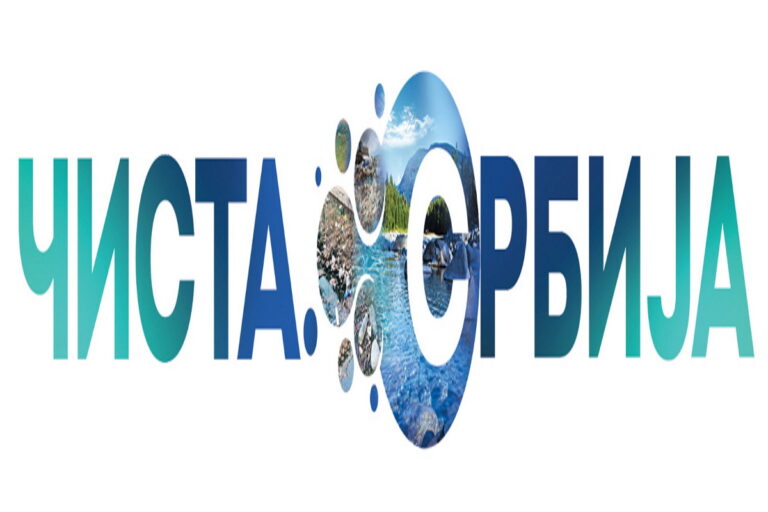Unfortunately, Serbia is not a country which can brag with achieved ecological standards of Europe and developed countries of the world. „Clean Serbia“ Project is one way to achieve European standards and preserve our natural resources for the future generations.
CLEAN SERBIA Project covers two projects: Project of construction of municipal (sewage) infrastructure and Project of construction of infrastructure for disposal of solid municipal waste in the Republic of Serbia. Within the scope of these projects, construction of a sewage network in the length of 5,206,679.31m and 165 wastewater treatment plants which will cover around 3,000,000 residents at 89 locations is planned.
Additionally, the project will cover repair, reconstruction, re-cultivation and construction of solid municipal waste management centers in Niš, Kragujevac, Kraljevo and Pančevo with two thermovaluers (plants which will convert waste into electrical and thermal energy).
The works have already begun and are taking place at 16 locations in 14 local self-governments (Novi Sad, Kragujevac, Knić, Novi Bečej, Kučevo, Obrenovac, Lazarevac, Mionica, Svrljig, Kladovo, Lajkovac, Vranje, Krupanj, Varvarin) where a sewage network in the length of 680,344.36m and 26 wastewater treatment plants which cover 195,100 residents are being constructed.
So far almost 60,000 m of sewage network has been constructed at the aforementioned 16 locations. Wastewater treatment plants for all locations are in the designing phase.
In the current 2022, opening of additional 21 locations for the construction of sewage network and wastewater treatment plants across the Republic of Serbia is planned.
The entire Project was initially conceived as the Project to protect Serbian Rivers, primarily all three Morava Rivers, Drina and Kolubara Rivers.
Implementation of the Project itself is of utmost significance for the Republic of Serbia, because our country is currently in the biggest and financially most straining phase in the field of quality water protection, and that is mirrored in the construction of almost 6000 kilometers of new sewage network and more than 250 wastewater treatment plants, out of which the Ministry of Construction is building almost 200 plants (apart from „Clean Serbia“, two more projects are being implmented – a project with the KfW Bank and a project with Hungary).
This way, the problem that 3,000,000 residents share in over 90 cities and municipalities in Serbia will be addressed.
The official data indicate that in the Republic of Serbia, less than 8% of municipal wastewaters are being treated before discharge. That is a direct consequence of a small number of operational wastewater treatment plants which provide an appropriate degree of treatment, which directly influences the appropriate quality of waters discharged into the environment.
The biggest pollutants of waters are municipal and industrial wastewaters which are being directly discharged into water streams without previous treatment.
The percentage of the population covered by wastewater treatment, according to the data from 2020, was 14.1% in 2018, out of which 13.1% was at least connected to a secondary treatment.
Underdeveloped sewage network poses an additional problem, which leads to a low level of municipal wastewater retention.
It is an indisputable fact that only around 1,572,314 households are connected to a sewage system in the Republic of Serbia, while the rest have to use a cesspool.
As a consequence of low-level retention and treatment of wastewaters, in the water streams of Serbia there is an unacceptably high content of potentially toxic elements even according to the level of maximally allowed concentration and frequency of its occurrence.
Industrial wastewaters, which are frequently discharged into the drainage systems of wastewaters from households without any prior treatment of quality control, pose a special problem and that additionally burdens the existing systems.
Treatment of municipal wastewaters has been acknowledged as one of the priorities in the Republic of Serbia, it is in all strategic documents and it is an unavoidable part of the official policy which analyzes the field of waters. In the process of defining a negotiating position ofr Chapter 27 it has been identified as financially most demanding field which carries two thirds of all investments into the water sector.
The stated facts are generally known and they are the very motivation for the Ministry of Construction and the Project itself, so that Serbia can preserve its natural resources, improve the living standard of its citizens and contribute to general efforts and aspirations to become a part of the European family.
Construction of the sewage network in cities and municipalities of Serbia will be completed with the construction of Wastewater treatment plants (WWTPs). When it comes to the construction of the aforementioned wastewater treatment plants, it is necessary to emphasize that the Project plans for the implementation of best and proven technologies for our circumstances, technology of the most eminent global manufacturers. It is important to accentuate that all technologies which are already in the designing phase are applied in all European cities.
„Clean Serbia“ Project plans for the application of SBR, MBR and MMBR technologies. We remind that the technology which will be applied in the Project is already implemented by the European companies in Raška, Kruševac, Čajetina.
The very begining of the implementation of the „Clean Serbia“ Project was preceded by a series of professional analyses of all available and widely used technologies. Three key parameters, according to which the analyses were conducted, were taken into consideration: the size of the plants which depents on the size of the city, the recipient and the quality of incoming untreated water.
The mentioned analyses were conducted by the most eminent Serbian professors whose contribution does not end there, they actively participate and follow the implementation of the Project, from a scientific standpoint.
OUR LAND MUST BE CLEAN – OUR RIVERS MUST BE CLEAR – WATER WHICH WE DRINK HEALTHY AND GOOD – HEALTH OF OUR CITIZENS IS A PRIORITY AND MAIN GOAL OF THESE PROJECTS!


